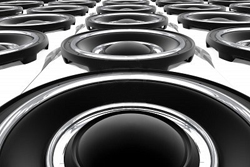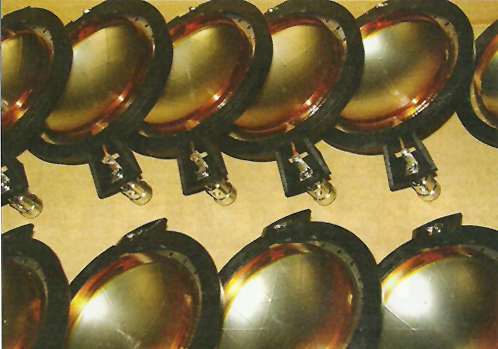Why are there so many different kinds of loudspeaker drivers and types?
Working for a loudspeaker manufacturer over the years I’ve heard many people say, “What’s the best speaker you make?” Or, “I’d like your best I5-inch loudspeaker,” etc.
The truth of the matter is the “best” speaker depends on your application.
The main reasons because there are so many different applications, and no one loudspeaker is capable of fulfilling all the requirements of all applications. And like most things, they each have their own strengths and weaknesses.
The most common type is the moving coil loudspeaker, which include a voice coil in a magnetic gap connected to a diaphragm or cone that vibrates the air. (After all, sound is just vibration of air.)
Without going into a lot of detail, electric current moving through a magnetic field will create a force. This is the basis of all electric motors, and moving coil loudspeakers are basically just linear motors.
To produce the full range of sound that humans can hear typically requires two or three speakers of differing size. Producing deep bass requires the movement of large volumes of air; hence woofers and subwoofers are usually large diameter loudspeakers, such as 15 and 18 inches.
Some companies have made woofers as large as 36 inches in diameter (and maybe larger ones of which I am unaware), but the price increases exponentially with diameter. making loudspeakers larger than 18 inches relatively uncommon.
Naturally, large diameter loudspeakers have relatively heavy moving parts. They also couple with the air fairly inefficiently because their size is still small compared to the wavelengths of sound they are producing.
In fact, the efficiency of a direct radiator loudspeaker is usually less than 5 percent. As a result, it takes prodigious amounts of power to produce high volumes at low frequencies. Horn loading improves the coupling efficiency to better than 10 percent, but increases cost and complexity, along with some subtle technical challenges, such as horn distortion.
At the other end of the spectrum are tweeters and compression drivers. Since these speakers are intended to reproduce high frequencies, their parts must be capable of moving very fast, albeit over short distances.
In order to do this efficiently, the parts need to be very light, yet still strong enough not to have their shape distorted too much as they push the air or the resulting sound will also be distorted.
Compression drivers can be thought of as high-efficiency tweeters, and they employ a couple of engineering tricks, one of which was mentioned earlier – horn loading.
The other is compression loading whereby the entire surface area of the diaphragm moves the air, but that air is constricted to slots or holes with much less area that lead to the horn. This improves the maximum output level and improves the high frequency efficiency.

















